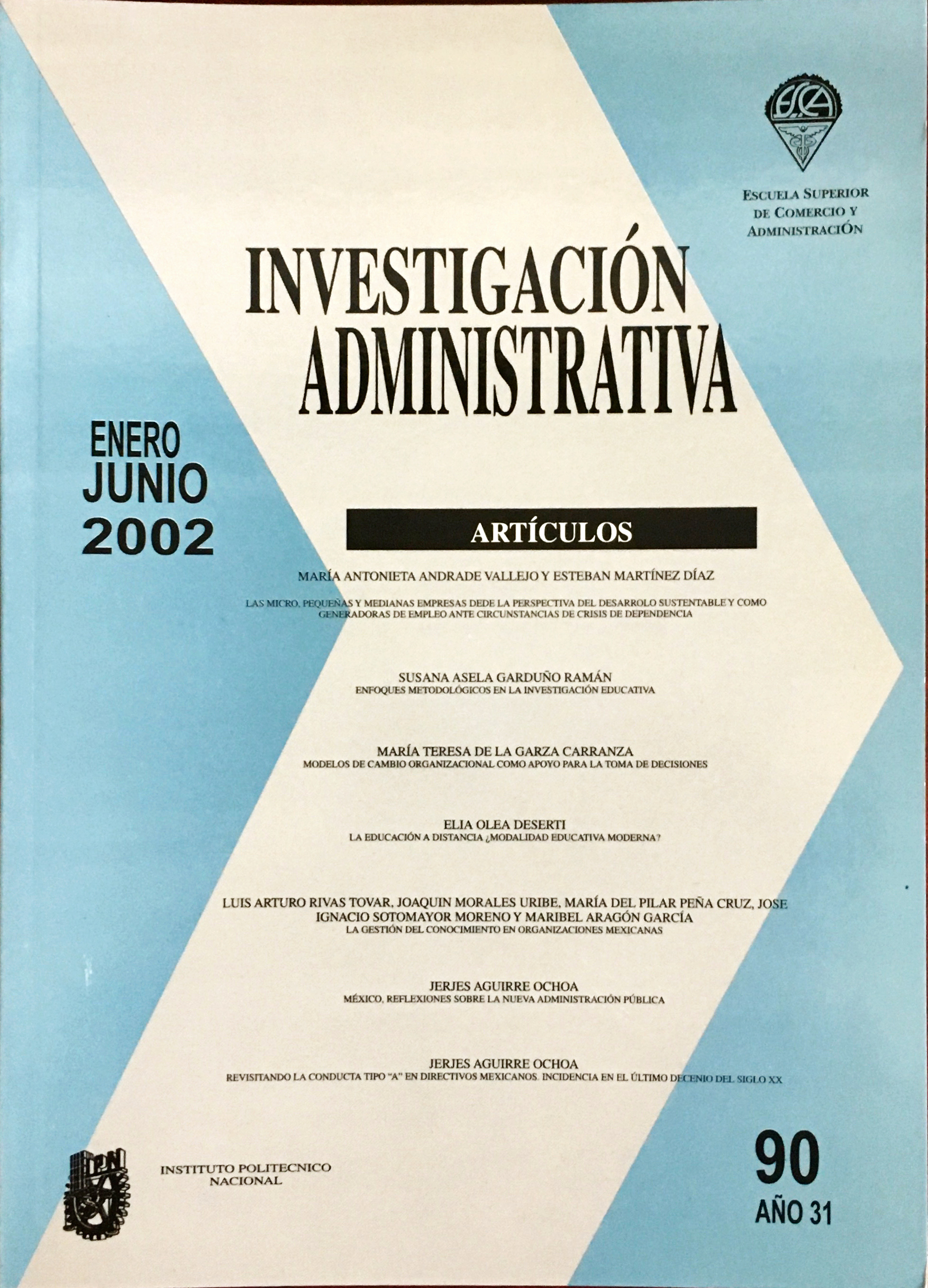KNOWLEDGE MANAGEMENT IN MEXICAN ORGANIZATIONS
Main Article Content
Abstract
This descriptive research has been done on a sample of fifty two Mexican organizations, among them: ten universities twenty eight private enterprises as well as fourteen public enterprises and institutions. As a result of this work it is conclude that there is a scarcy evolution in Mexico of Knowledge Management as an avant-garde field, this is due not only to technological barriers but to cultural aspects that classify information data and knowledge as something that is not commonly well known and shared .
Article Details

This work is licensed under a Creative Commons Attribution-NonCommercial 4.0 International License.
References
Andersen Arthur. “La Gestión del Conocimiento en el Sector Sanitario: Reflexiones y Retos para Avanzar”. Asociación de Economía de la Salud, Madrid, 1999.
Bontis, N, Dragonetti, N.C., Jacobsen, K. and Roos, G. (1999) “The Knowledge Tool Box: A Review Of The Tools Available To Measure and Manage Intangible Resources”, European Management Journal, Vol. 17, No. 4, 391-402.
Choo, C.W. (1996) “The Knowing Organizations: How Organizations Use Information to Construct Meaning, Create Knowledge and Make Decisions, International Journal if Information Management”, Vol. 16, No. 5, pp. 329-340.
Davenport Thomas H., Harris Jeanne G., Kohli Ajay K., “How Do They Know Their Customer so Well?”, MIT Sloan Management Review, winter 2001
Davenport, T. H. (2001) Some Principles of Knowledge Management (Internet) Graduate School of Business, University of Teas at Austin, Available http://www.bus.utexas.edu/kman/kmprin.htm (Accessed 6 February 2001).
Demarast, M. (1997) “Undestanding Knowledge Management, Long Range Planning”, Vol. 30, No. 3, pp. 374-384.
Dixon, N.M, (1999) “The Changing Face of Knowledge, The Learning Organization”, Vol. 6, No. 5, pp. 212-216.
Drucker, P. (1988) “The Coming of the New Organizations”. Harvard Business Review. January-February 1988, Vol. 66, No. 1.
Galagan, P.A. (1997) “Smart Companies Training and Development”, Vol. 51 No. 12, pp 20-24
Gumble, H. (1988) Knowledge Management, Work Study, Vol. 47, Vol. 5. Num. pp 175-177
Jager, M. (1999) “The KMAT: Benchmarking Knowledge Management, Library Management”, Vol. 20, No. 7, pp. 367-372.
Joia, L.A. (2000). “Measuring Intangible Corporate Assets. Linking Business Strategy with Intellectual Capital”. Journal of Intellectual. Capital, Vol. 1, No. 1, pp. 68-84.
Jordan, J. Jones, P. (1997) “Assessing your Company´s Knowledge Management Style, Long Range Planning”, Vol. 30, No. 3, pp. 392-398.
Harris K., Fleming M., Hunter R, Rosser B., Cushman A, “The Knowledge Management Scenario: Trends and Directions for 1998-2003”, GartnerGroup, Strategic Analysis Report, 18 March 1999
Knowledge Management, Vol. 4, No. 3, pp. 217-223.
Rowley, J. (2000) Knowledge Organization for a New
Millennium: Principles and Processes, Journal of Rugles, R. (1988) “The State of Notion: Knowledge Management in Practice”, California Management Review, Spring, Vol. 40, No. 3 .
Toffler, A. (1990). “Powershift: Knowledge, Wealth and Violence at the Edge of the 21st Century”. Bantam Books.

